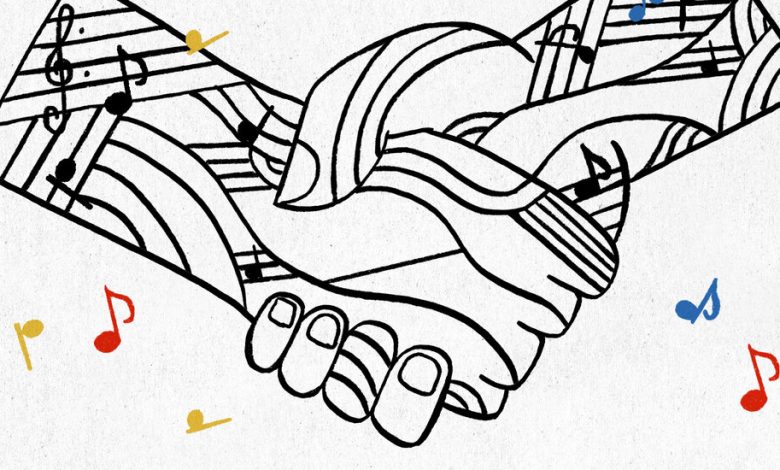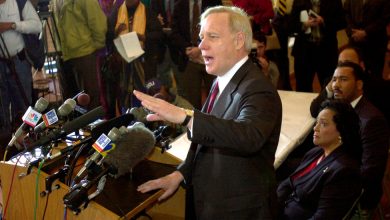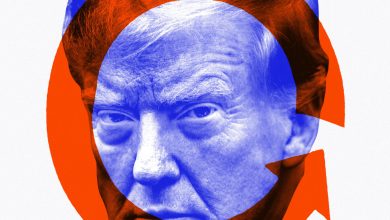For the U.S. and China, It Starts With Listening

There is a phrase in China, “zhiyin” (知音), used to describe the person who knows you best. The first character means to “know” or “understand” and the second means “music.”
It is connected to the ancient story of Boya, a revered master of the guqin, a Chinese plucked string instrument. Boya longed to find someone who could truly appreciate his music. One day as he played, he was heard by a woodcutter named Ziqi. Moved, Ziqi likened his playing to the majesty of a mountain, or the power of a river. When Ziqi died, Boya played his guqin one last time, then destroyed it because he had lost his zhiyin, the only one who could “understand the music in him.”
There is great power in this phrase.
I’m an opera singer and teacher and a practitioner of cultural diplomacy, which uses the arts, sports, literature and other forms of expression to foster mutual understanding. This works best not when we merely perform for one another, but when we truly listen and learn from one another.
This is especially important in challenging and complex international relationships like that between the United States and China. It is useful to remember that the normalization of U.S.-China relations was helped by “Ping-Pong diplomacy,” the visit to China by a U.S. table tennis team in April 1971, followed by the Philadelphia Orchestra’s visit in 1973, the first by a Western orchestra to China. Countless cultural and educational exchanges since then helped to bring the two nations closer.
But the pandemic and increasingly adversarial relations have drastically reduced cultural exchange. Several important U.S. programs were canceled during the Trump administration, including the Fulbright program, which sent American students to study in China, and vice versa. As of June of this year, there were estimated to be only about 350 Americans studying in China, down from some 15,000 a decade ago. Not only are we not listening, we are barely communicating.
I learned the concept of zhiyin on a recent concert tour in southeastern China. I’ve repeatedly traveled to China for more than a decade to perform and as an arts envoy for the U.S. State Department, but I had not yet heard this phrase. I was struck by the potential it offers our two countries.
My teacher was Huang Yicheng, an 8-year-old boy in Fujian province. He lived in a small mountain town built around a water mill along a picturesque river. He watched from his doorway with a serene smile and alert gaze as my colleagues, other foreign artists and I made our way through town.
His mother welcomed me into their humble home, which was made of stone and had a small well at its center from which the family drew water. We gathered at their dinner table and I chatted with my new young friend. My Mandarin is basic at best, but he spoke surprisingly good English, and I suggested that we keep in touch to learn more about each other and practice our language skills. Yicheng eagerly agreed, shaking my hand.
When I learned that he didn’t have his own phone to keep in contact with me, I insisted on giving his parents some money to buy him one, over their reluctance. Later, Yicheng found our bus as we were about to leave, handed me a small gift — a plaster replica of the village — and said he hoped that because I was a singer, I could be his zhiyin.
Later on that trip, in the city of Xiamen, the true meaning of zhiyin became clear to me when I met with Zheng Xiaoying, an influential 94-year-old conductor and educator. In 1962 she became the first Chinese conductor to perform at an opera house abroad, leading “Tosca” in Moscow. I sang for her from an opera that we both love, “Carmen,” and she sang passages to me in Mandarin. Music and the arts allow us to celebrate our common humanity.
As far apart as China and the United States may seem, our futures are deeply intertwined, and the world’s destiny lies in our collective hands. Americans must try to understand the hopes, dreams and aspirations of the Chinese people. China is hurtling into the future in ways that would stun many Americans, and there are reminders everywhere: public parks with virtual reality play spaces; A.I. robots interacting with people in train stations, hotels and shopping malls; digital payment methods that make credit cards and cash look like ancient relics.
There are encouraging signs for exchange. Late last year, Congress passed, with bipartisan support, the




